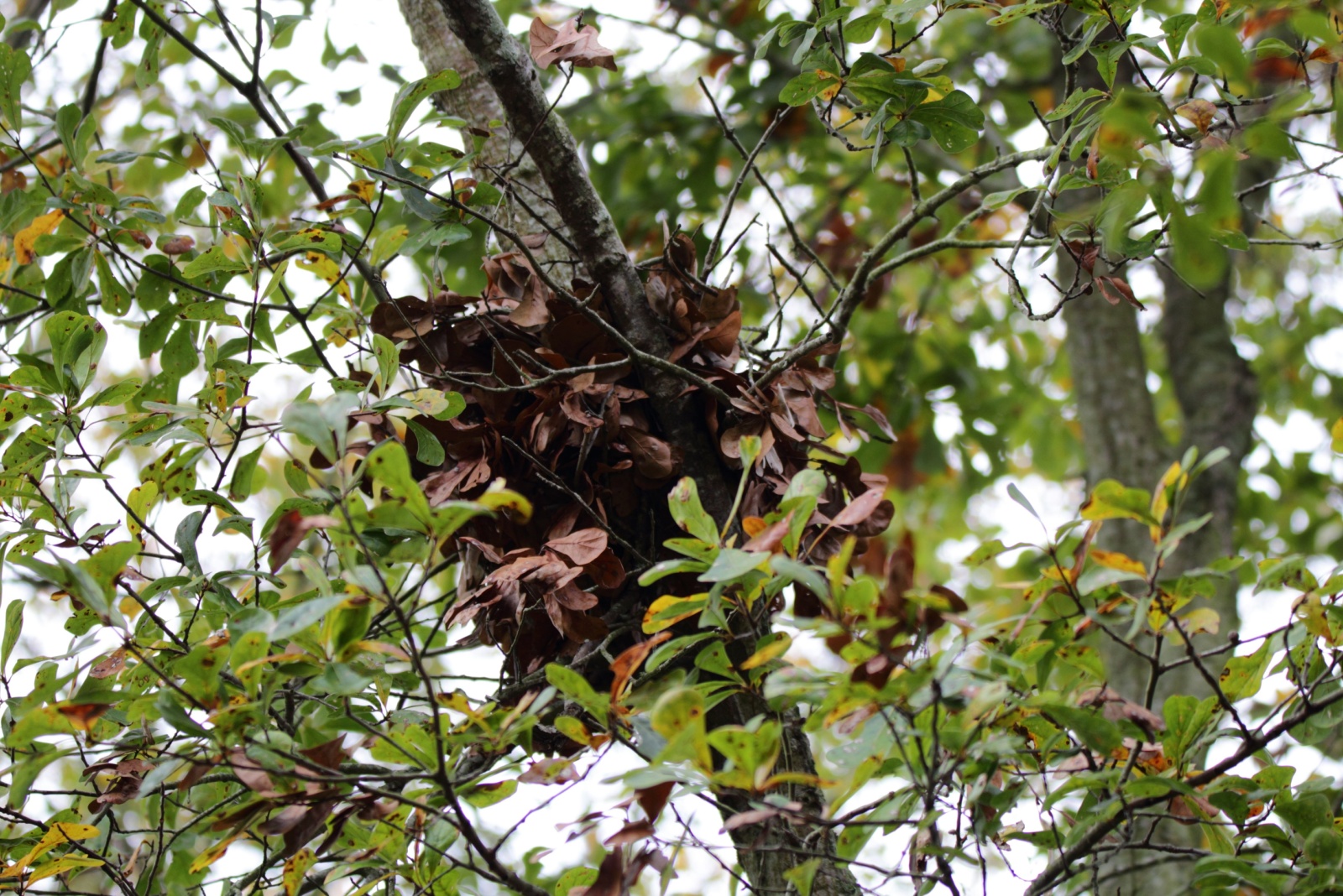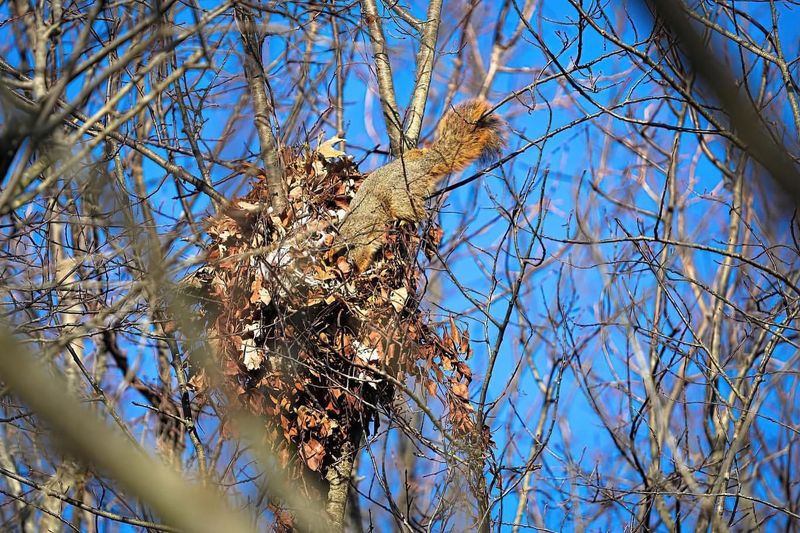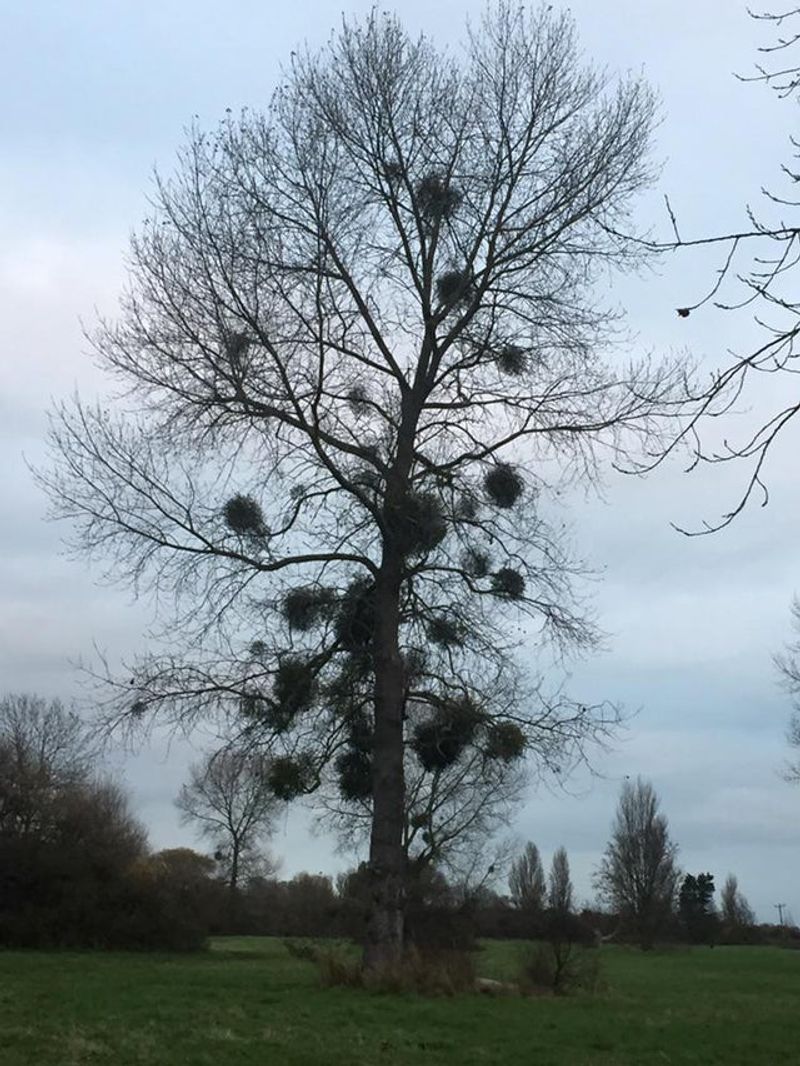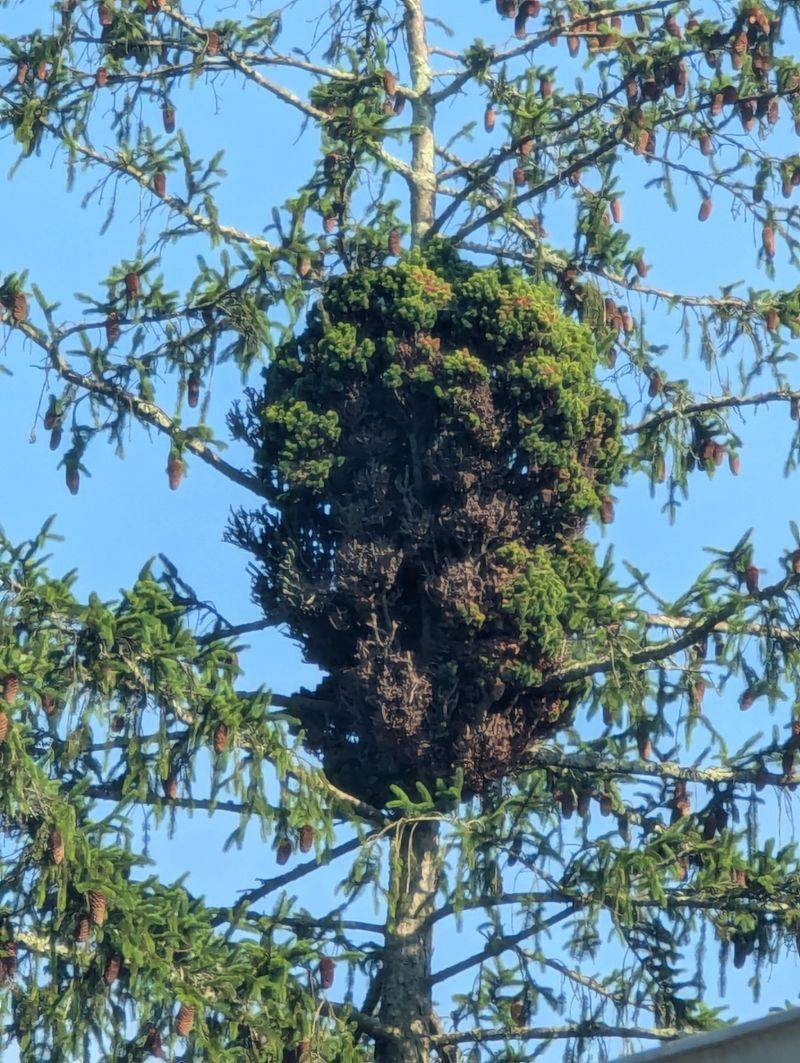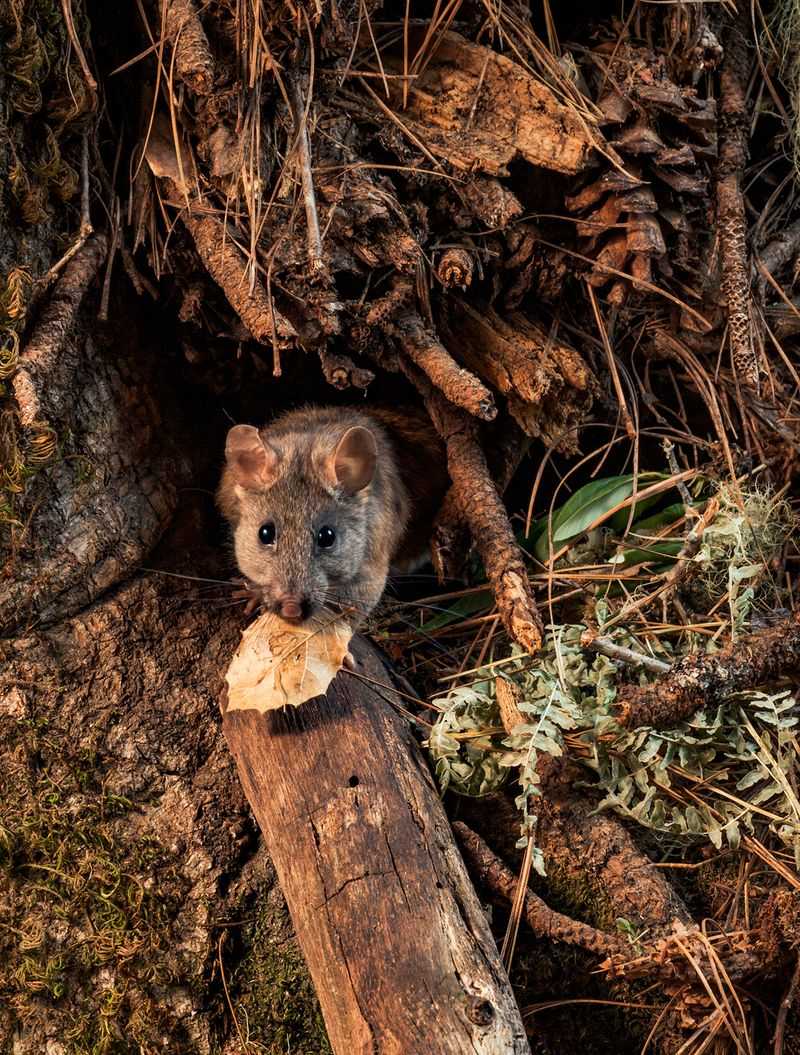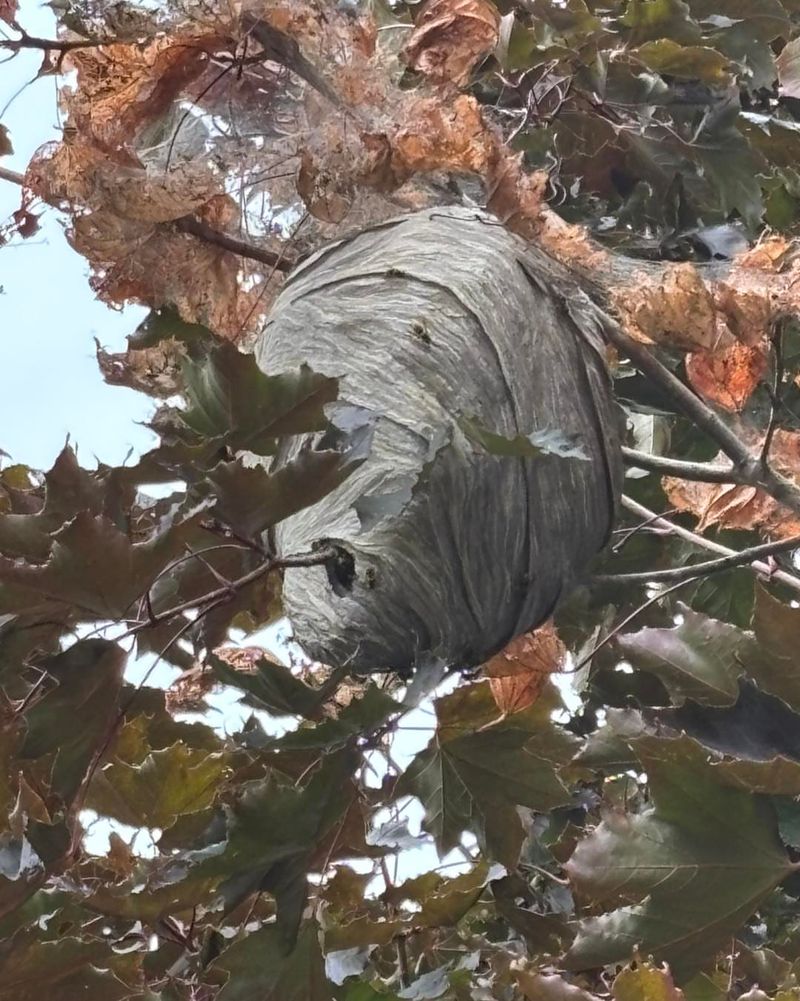Have you ever looked up at a tree in Nevada and spotted what looks like a messy ball of leaves? Most people think it’s a bird nest, but that’s usually not the case. These mysterious clumps are actually something quite different and surprisingly common across the state.
Understanding what they really are can help you appreciate the hidden life thriving in Nevada’s trees.
1. Squirrel Dreys Are The Real Culprit
Squirrels build these leafy homes called dreys, and they’re the most common explanation for those mysterious balls you see in Nevada trees.
Unlike bird nests, dreys are constructed using leaves, twigs, and moss all woven together into a cozy sphere. Squirrels prefer building these structures high up in branches where they feel safe from predators.
The outer layer protects them from wind and rain, while the inside stays warm and dry. Nevada’s tree squirrels work hard each fall to prepare these shelters for winter months ahead.
2. Mistletoe Clumps Create Confusion
Mistletoe grows as a parasite on tree branches and forms dense, round clusters that trick many observers. This plant attaches itself to host trees and draws nutrients directly from them, creating those puzzling spherical shapes.
Across Nevada, mistletoe thrives in various tree species, especially junipers and pines. The clusters can grow quite large over time, sometimes reaching basketball size.
While it might look harmless, too much mistletoe can weaken trees by stealing their water and nutrients continuously.
3. Witches’ Broom Disease Causes Odd Growth
Sometimes trees develop a strange condition called witches’ broom, where branches grow abnormally thick and tangled into ball-like formations. Fungi, viruses, or insects can trigger this unusual growth pattern that catches everyone’s attention.
The affected branches sprout excessively, creating a dense mass that resembles a giant nest from below. Nevada trees, particularly conifers, occasionally show these symptoms when stressed or infected.
Though it looks alarming, witches’ broom rarely kills the entire tree, just the affected section.
4. Pack Rat Nests Hide In Branches
Pack rats, also called woodrats, occasionally build their elaborate nests up in trees rather than on the ground. These resourceful rodents gather sticks, leaves, and anything else they find to construct impressive shelters.
Their nests can reach impressive sizes and often confuse people who expect only birds to nest in trees. Nevada’s desert woodrats are especially creative, incorporating cactus pieces and other prickly materials for extra protection.
These nests serve multiple generations and grow larger as each family adds more materials over time.
5. Leaf Galls Form Unusual Clusters
Tiny insects and mites sometimes cause trees to produce abnormal growths called galls, which bunch together into rounded clusters. When a tree reacts to these pests laying eggs, it creates protective tissue that swells into odd shapes.
Multiple galls forming close together can create what appears to be a single large ball hanging in Nevada trees. Oak trees are particularly prone to developing these formations during certain seasons.
Though they look concerning, most galls don’t seriously harm healthy trees in the long run.
6. Abandoned Wasp Nests Remain Visible
Paper wasps construct large, papery nests that can look surprisingly like leaf clusters when viewed from below. These insects chew wood fibers and mix them with saliva to create their distinctive homes.
After wasps abandon their nests in late fall, the structures remain attached to branches throughout Nevada’s winter months. The weathered nests take on a grayish-brown color that blends with dead leaves and bark.
From the ground, these abandoned homes easily fool people into thinking they’re spotting bird nests or leaf piles.
7. Wind-Caught Tumbleweeds Lodge In Branches
Nevada’s famous tumbleweeds don’t just roll across highways—they sometimes get stuck high up in tree branches during windstorms. Once lodged, these dried plants accumulate more debris and create convincing nest-like appearances.
Strong desert winds can lift tumbleweeds surprisingly high, wedging them firmly between branches where they stay for months.
Other leaves and twigs catch on them, making the ball even bigger and more confusing. This phenomenon is especially common after particularly windy seasons across Nevada’s open landscapes.

